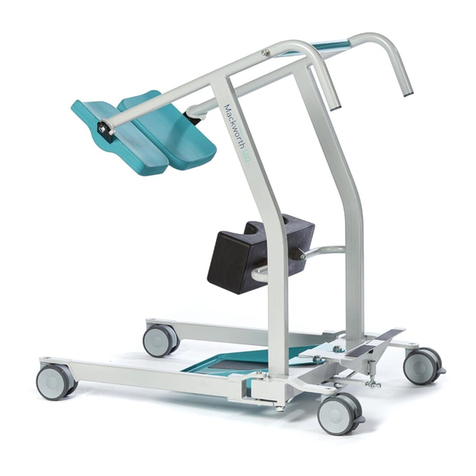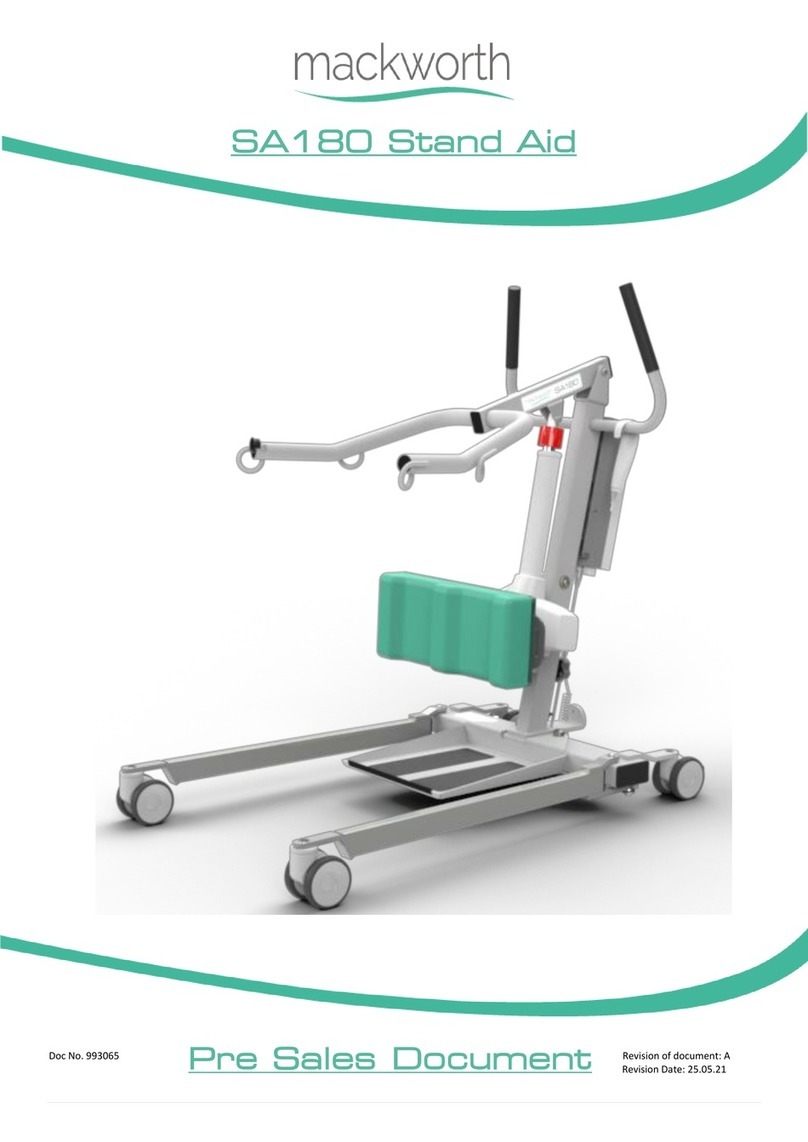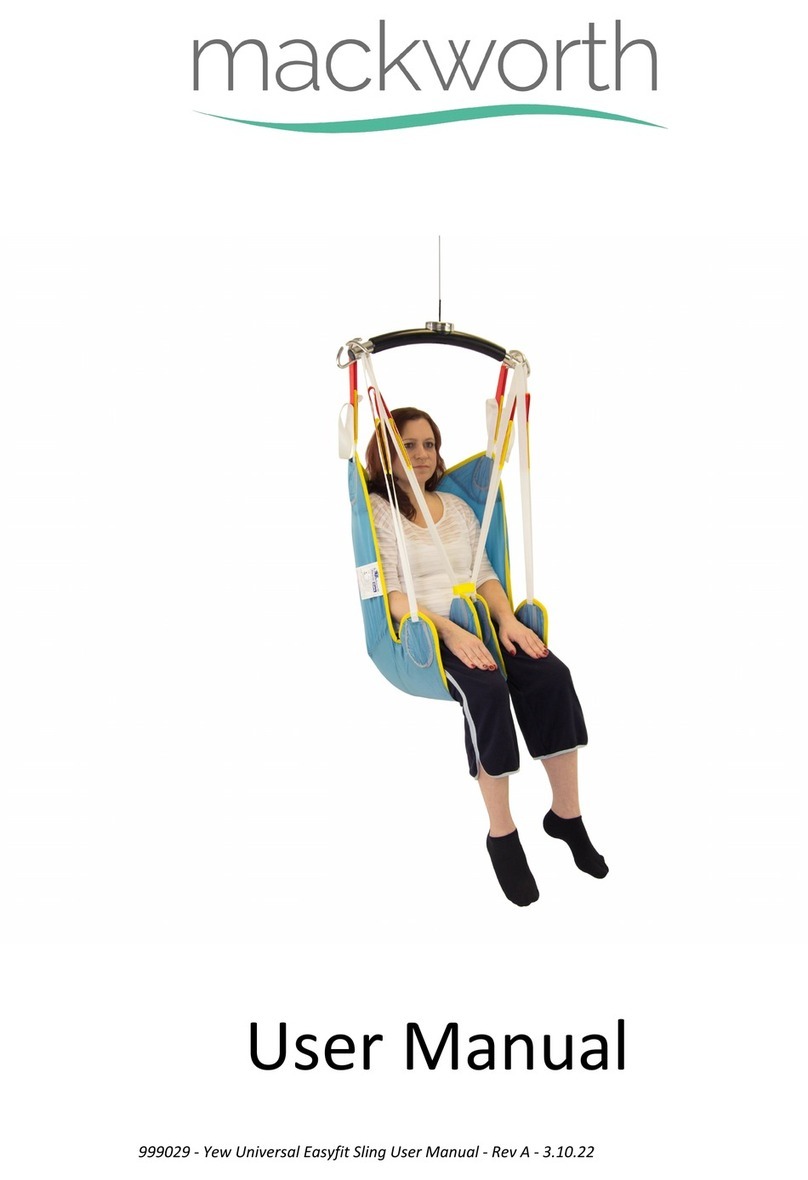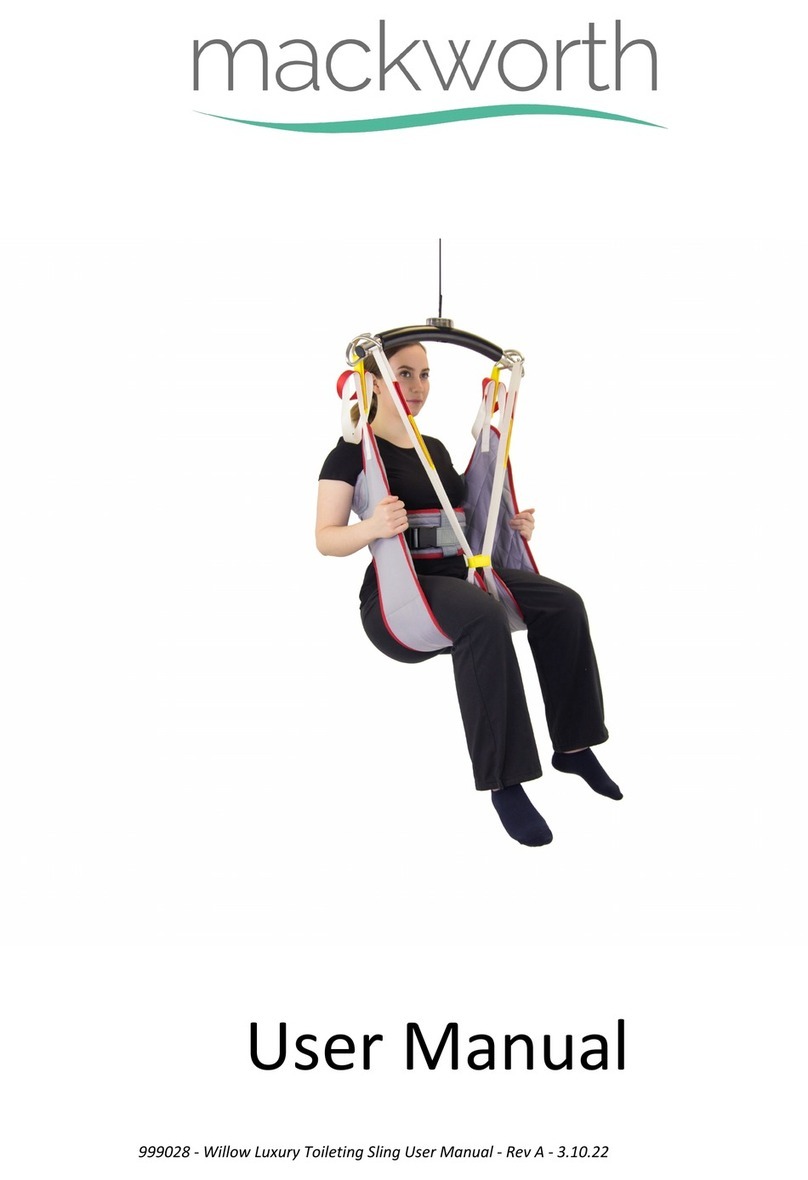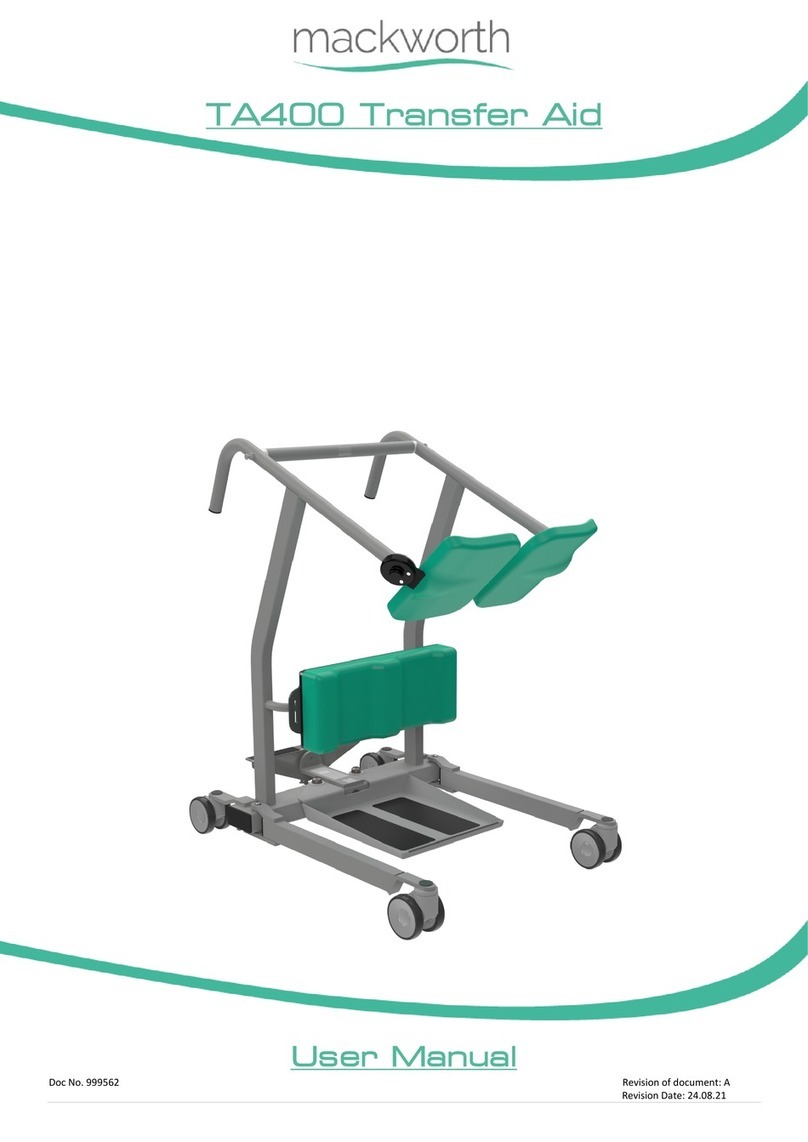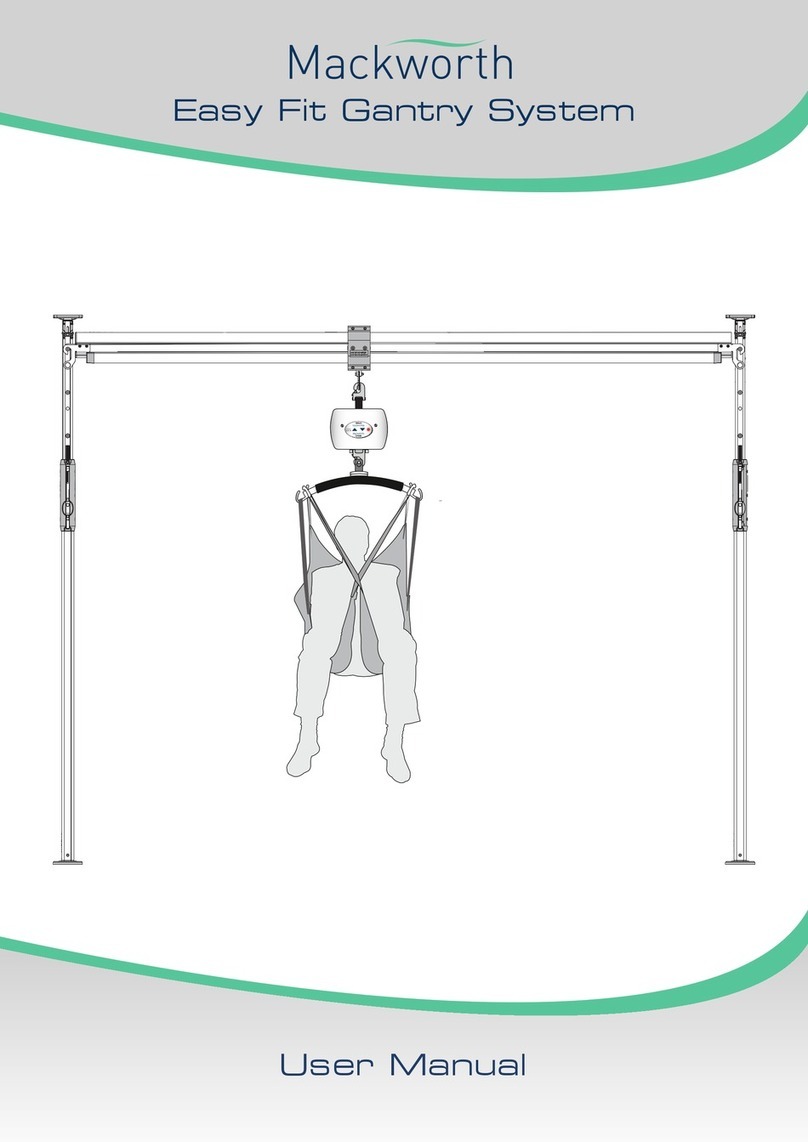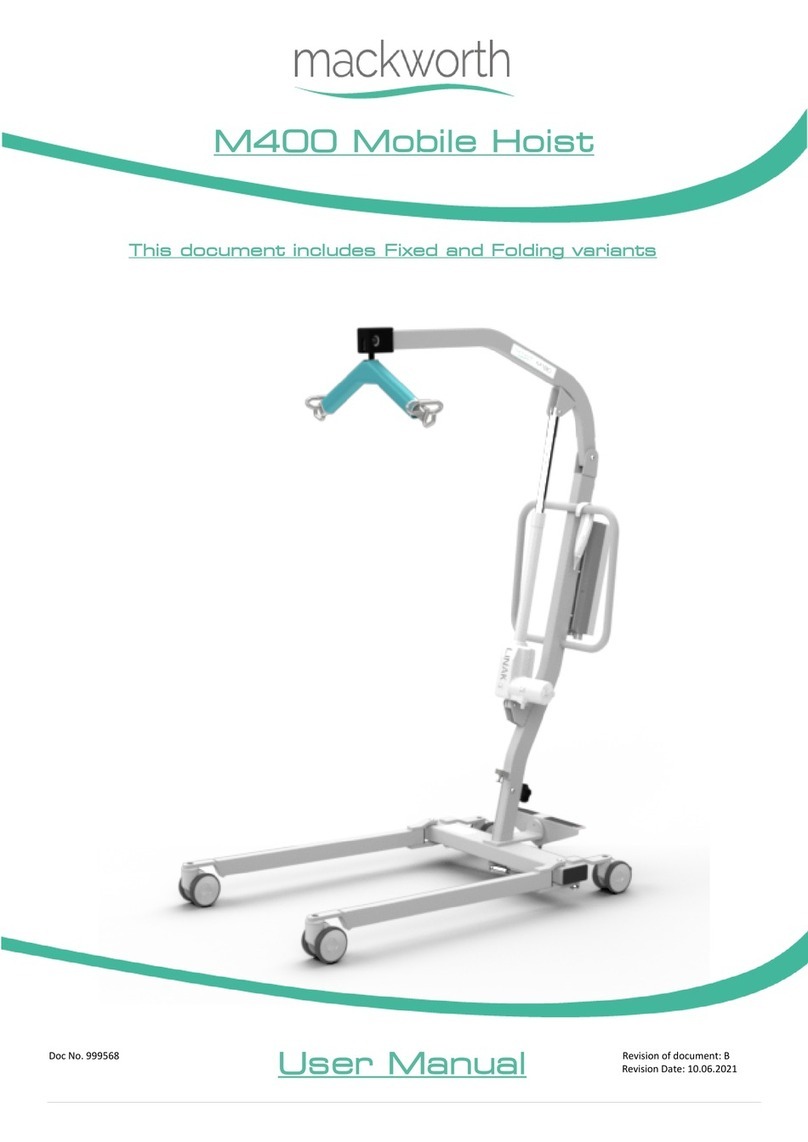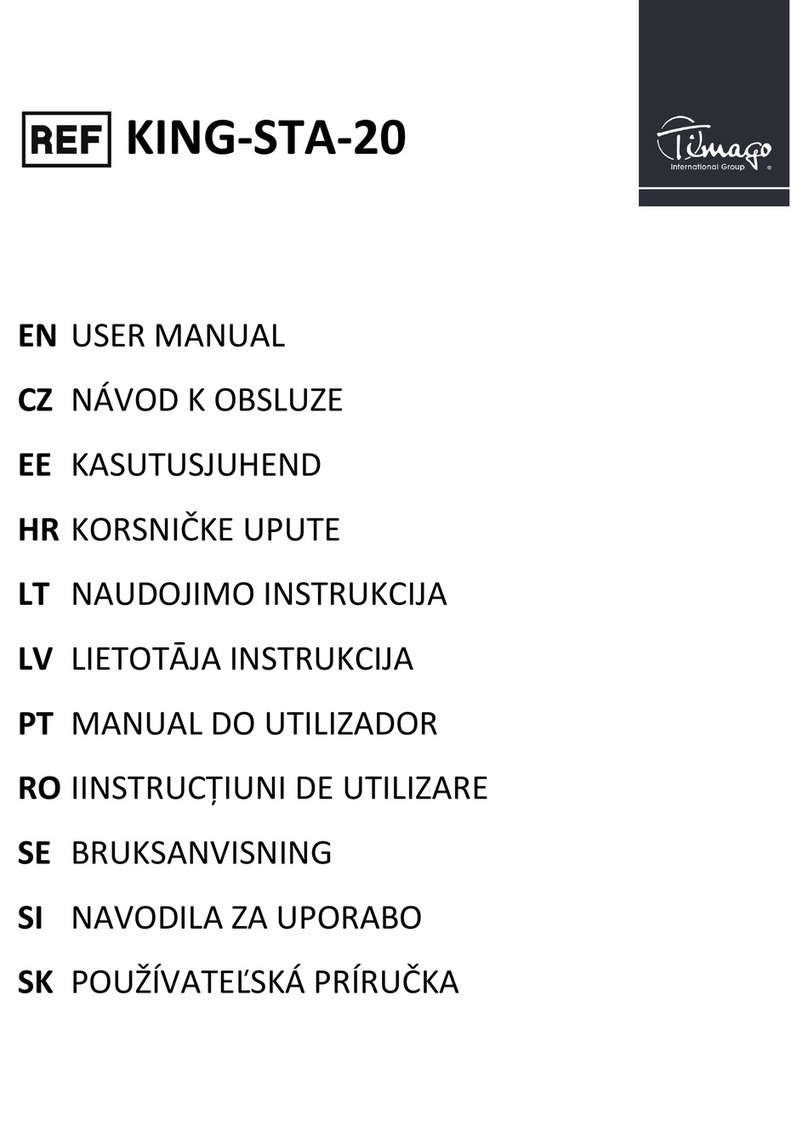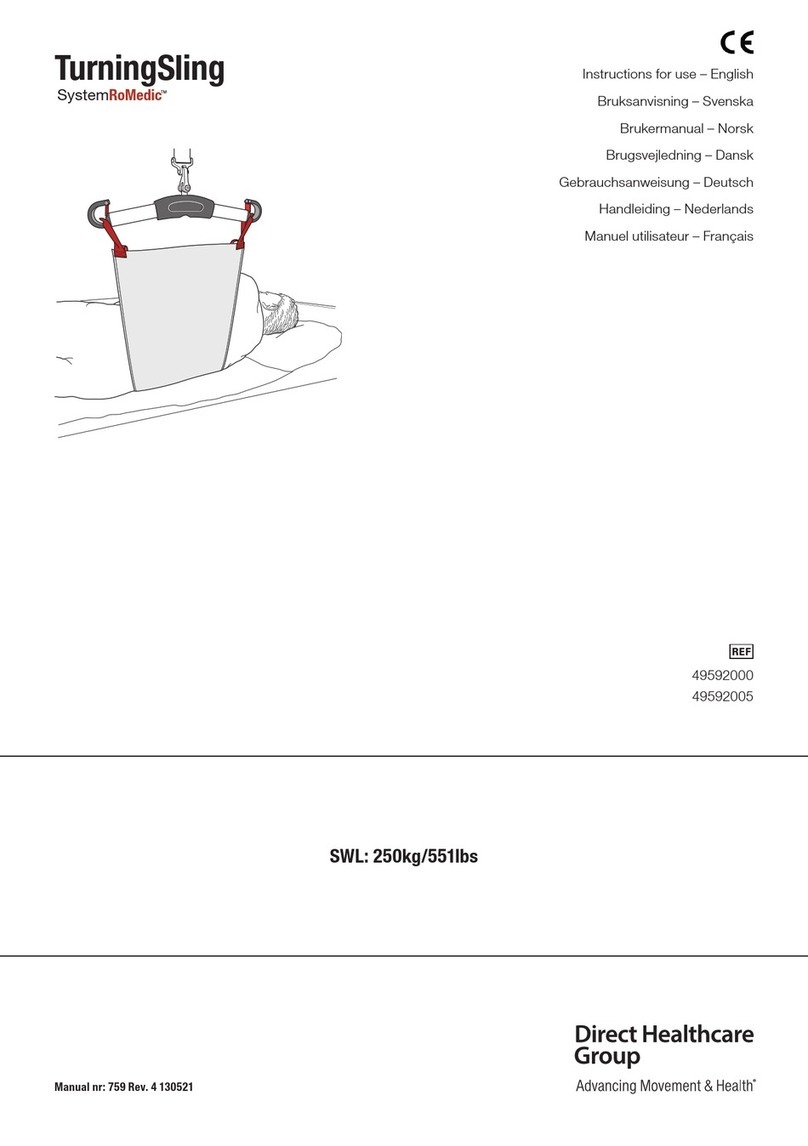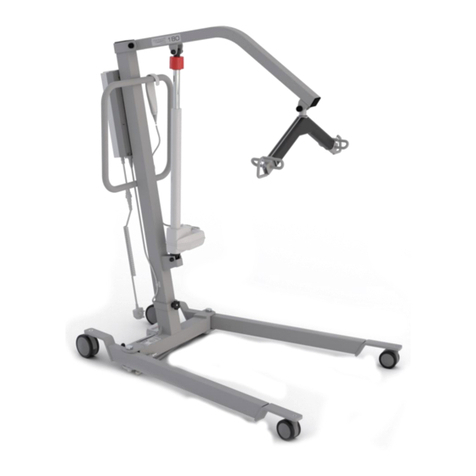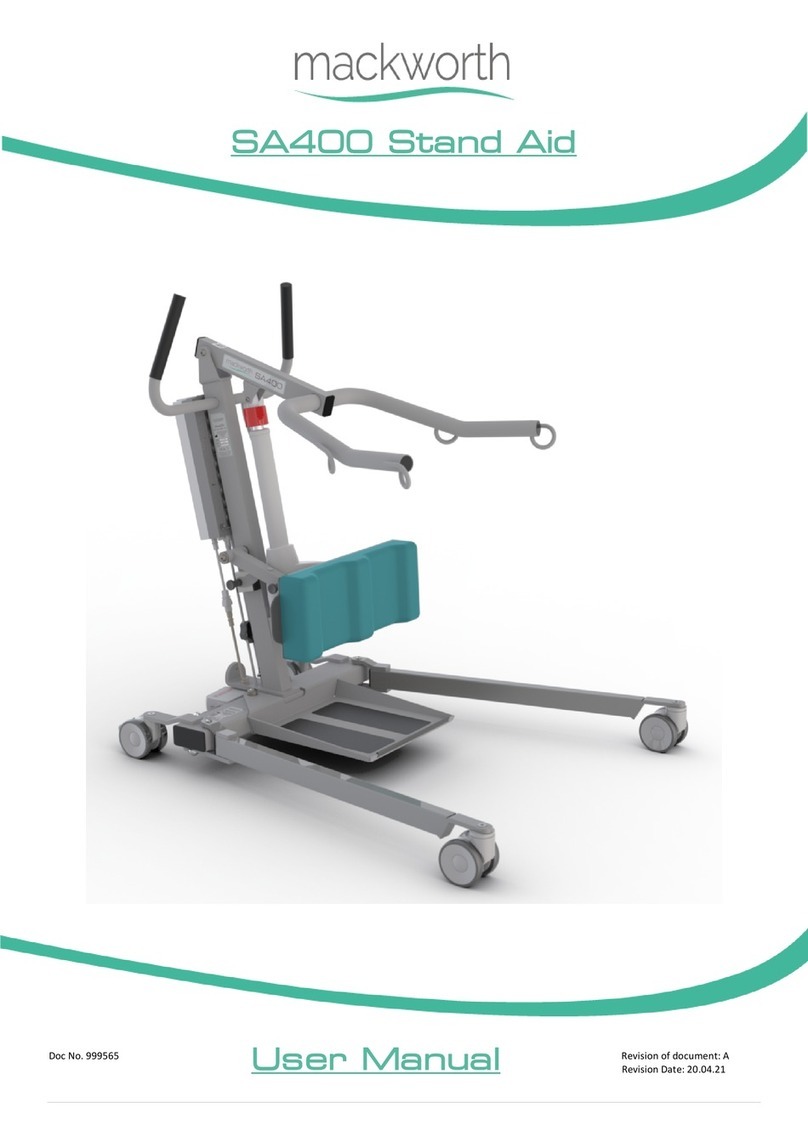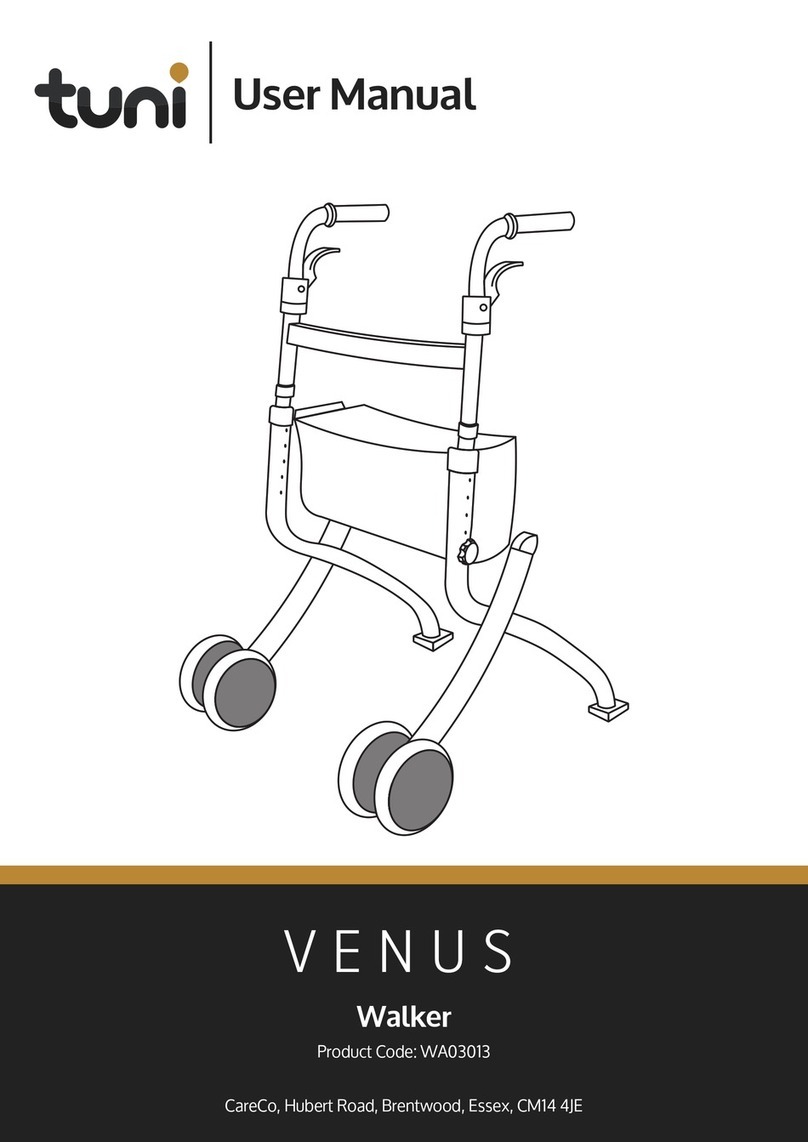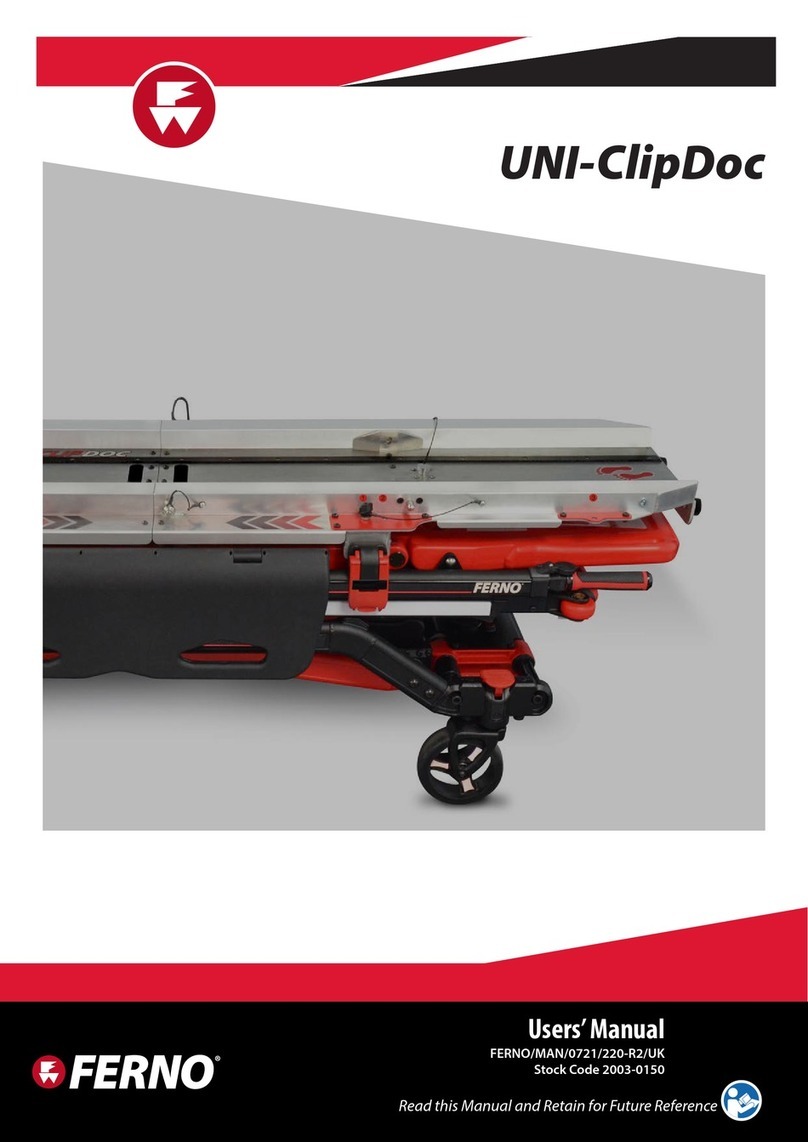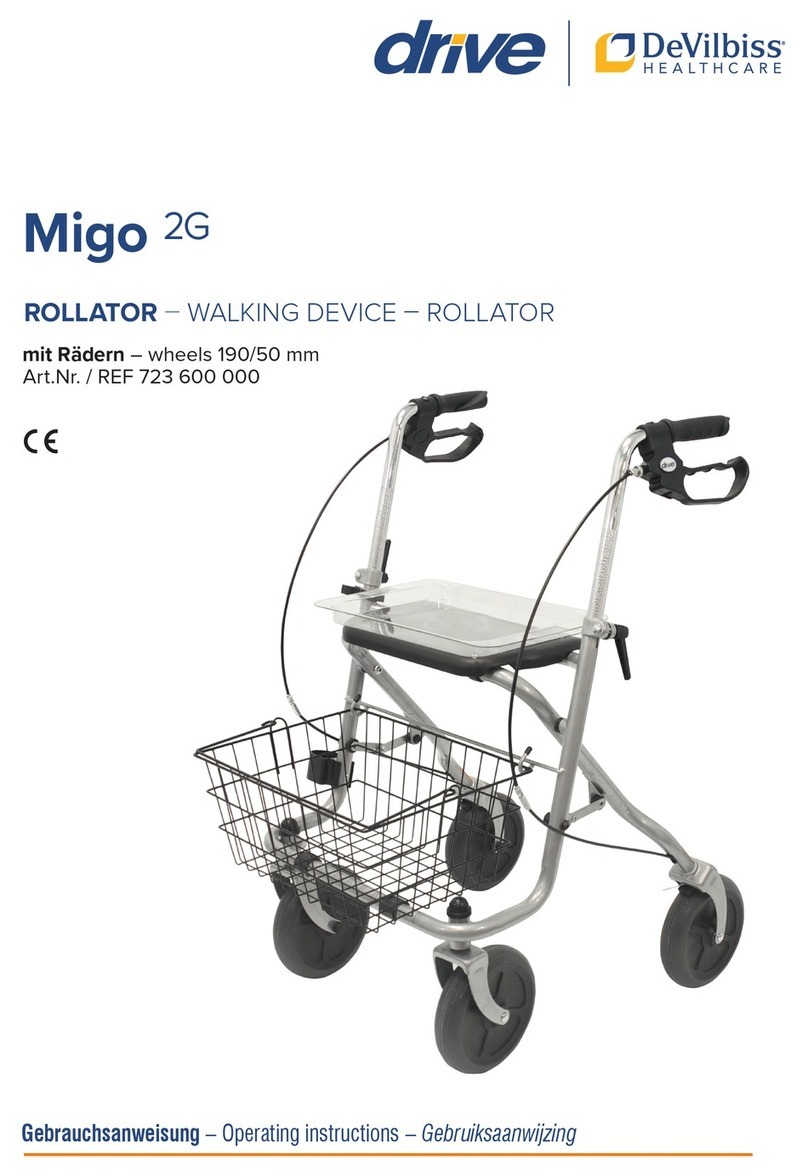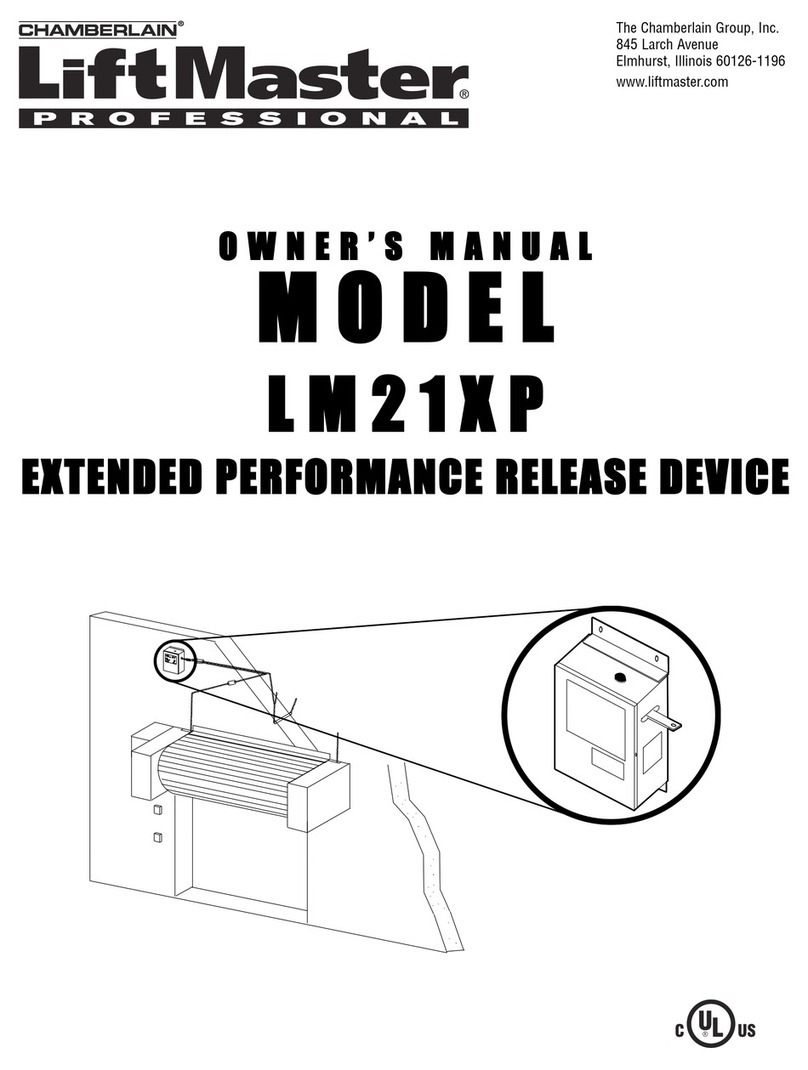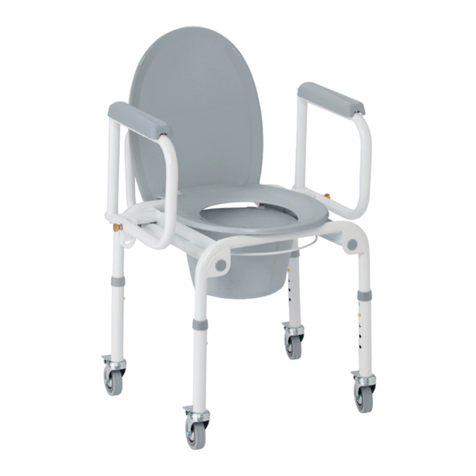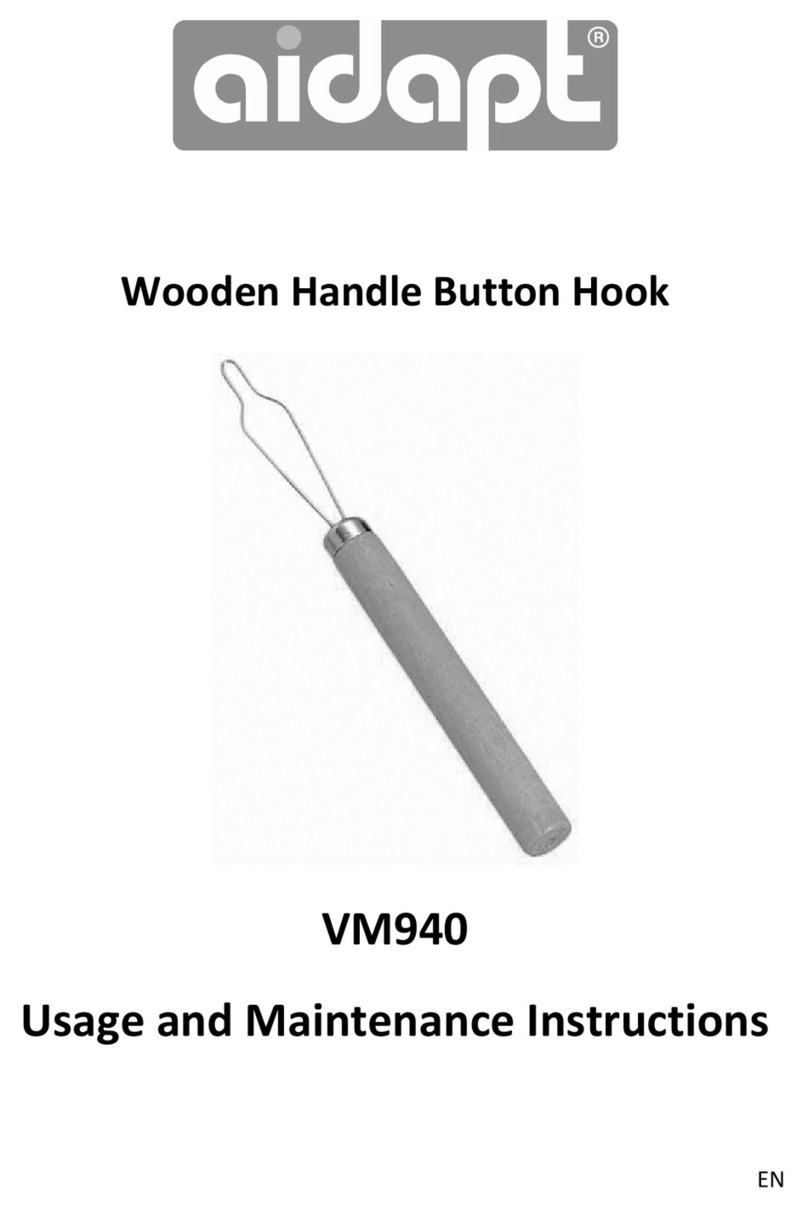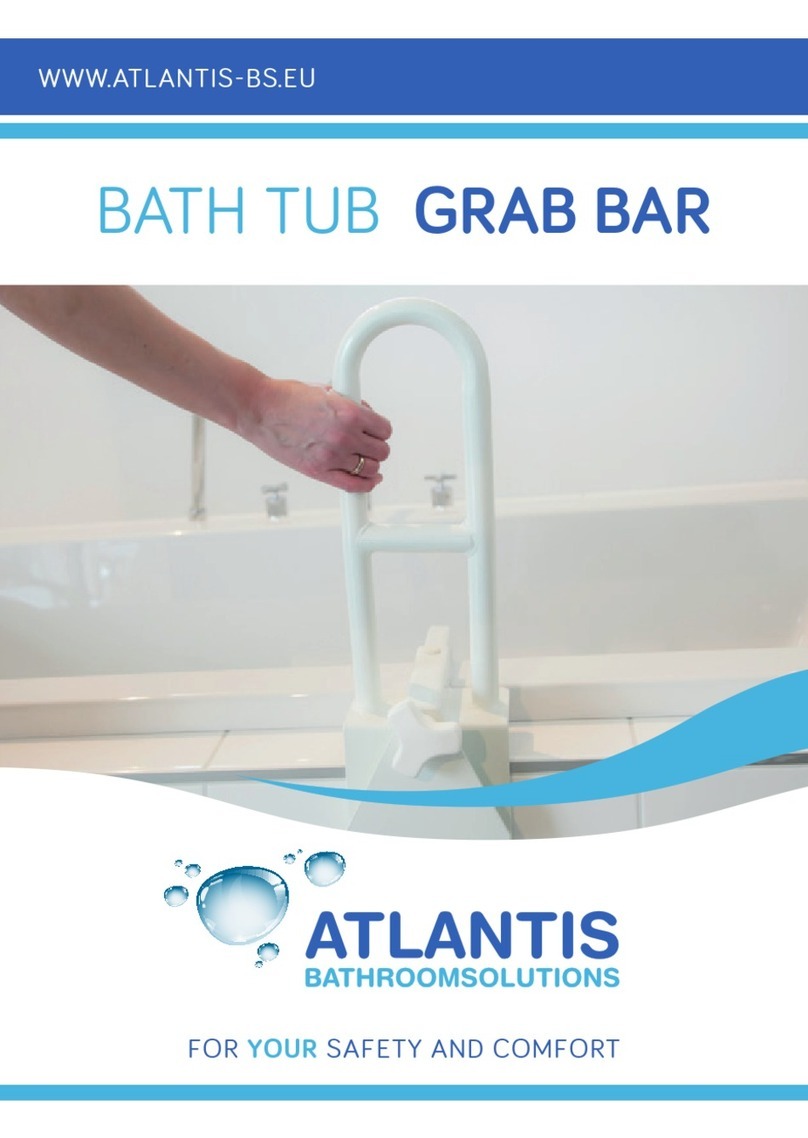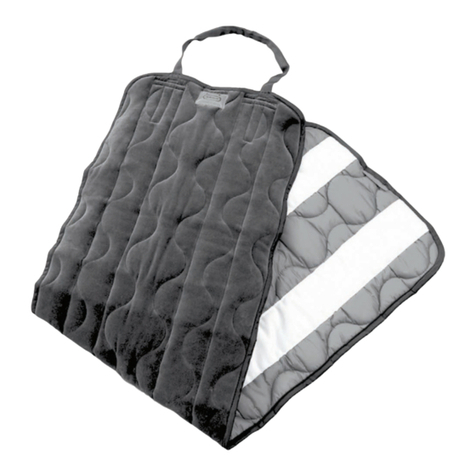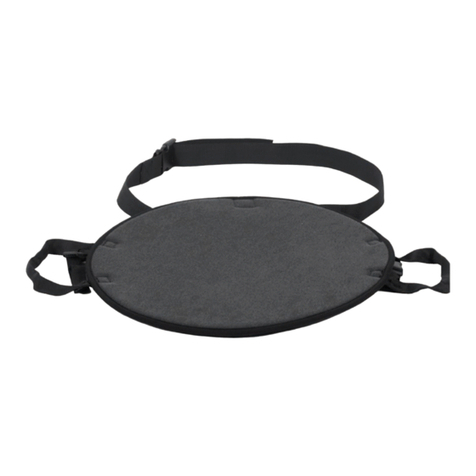
M-Series Mobile Hoist User Manual Page 5of 36 Part No. 999036 / Rev.6 / Mar 2018
2. Contraindications
There are no known “contraindications” associated with the usage of the
mobile hoist and its accessories, provided they are used a per
manufacturer’s recommendations and guidelines.
However, it is recommended that a client specific assessment is
completed by a trained and knowledgeable health care professional to
determine the method of transfer.
The manufacturer does not recommend a required number of caregivers
for the use of our products. This information and recommendation can
only be provided after a thorough personalized, case specific assessment,
as there are many factors that can influence these decisions.
It is however, “obligatory” that a client that is assessed as being an
independent user of our ceiling hoist technology have the ability to
receive assistance, during the transfer, in the event of a hoist malfunction
or personal concern.
This assistance can be provided in the form of; a nearby qualified
caregiver, a phone, a communication device etc.
3. Intended use / Overview of the M-Series Mobile Hoists
The mobile hoist is a lifting aid used by health care professionals to
transfer / lift clients.
The mobile hoist makes it possible to move mobility impaired individuals
with minimal strain or risk to the caregiver, while providing complete
safety, dignity and comfort for the client.
The mobile hoist is one of two components that make up this
technology. The other component, the sling, is a specially designed fabric
accessory that attaches to the mobile hoist by means of a carry bar and
straps, and holds an individual while the hoist, or transfer takes place.
The sling is generally supplied with the mobile hoist at the initial time of
purchase.
Please refer to any user guides supplied with the sling and reference
them while reviewing this manual.
The mobile hoist has the ability to hoist an individual up from one
location such as bed, then move the individual to another location and
finally lower the individual into a chair for example.
The functions of lifting up or down, or opening and closing the legs on
the hoist, are accomplished by pressing buttons on the hand control. The
hand control is attached to the mobile hoist.
Due to the design of the mobile hoist system, it takes very little effort to
press a button to perform the desired motion.




















